Navy Feels First Effects of FORCEnet
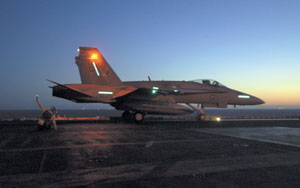 |
| A U.S. Navy F/A-18C Hornet prepares to launch for evening operations in operation Iraqi Freedom. The Navy’s FORCEnet program is incorporating network-centric innovations that already have had an impact in the Iraq War. |
The U.S. Navy is using a U.S. Defense Department model and wartime experiences to begin defining the network that will close the loop on full network-centric warfare. The FORCEnet program is completing a concept development phase this month, and planners now are able to envision when it will achieve key benchmarks.
Some aspects of FORCEnet already have been felt in Afghanistan and Iraq operations, including interoperability with other U.S. military services and coalition forces. These activities have given developers a taste of the future and its challenges.
One of the strongest enablers of this program is the Defense Department’s own Global Information Grid, or GIG. Its architecture is serving as a template for FORCEnet, leaving Navy experts to adjust only for the maritime nature of the sea service’s mission.
Rear Adm. Andrew M. Singer, USN, is the deputy commander of the Naval Network Warfare Command (NETWARCOM), Norfolk, Virginia. Describing FORCEnet as the command and control (C2) component of the Navy’s Sea Power 21, the admiral points out that, “without command and control, you have no real advantage in today’s world. We are treating FORCEnet as, not an enabler to warfighting, but part and parcel of the weapon systems. We see it as a weapon system.”
Adm. Singer explains that the command’s primary FORCEnet role is to lead the program from an operational perspective. The goal is for FORCEnet to improve C2, not just provide better communications and computers.
“FORCEnet’s goal is to empower the warfighter, not just to add things to what he already has,” the admiral emphasizes. He mentions that last year a discussion of FORCEnet would have focused on ongoing experimentation and new capabilities discovered in industry. Now, however, discussion will focus on goals for eight years down the line and the activities it will take to achieve them.
In addition to bringing in the operational flavor over the technology flavor, the command has several other discrete roles. They include ensuring jointness in the endeavor, beginning with the U.S. Marine Corps. The command also is working with the U.S. Army and the U.S. Air Force to ensure that FORCEnet “is threaded in the joint world and of the joint world,” Adm. Singer says.
NETWARCOM also is responsible for enforcing interoperability and related policies. In addition, it is the operational agent for Fleet Forces Command for FORCEnet sea trial aspects. Instead of merely buying FORCEnet systems and incorporating them into the fleet, NETWARCOM will work with the admirals in charge of the Second and Third fleets for sea trials that ensure that FORCEnet gear works at sea the way it should.
The command also is charged with leading the development of the FORCEnet architecture, particularly its operational view. The Space and Naval Warfare Systems Command (SPAWAR), as FORCEnet technical agent, is working on defining the architecture. SPAWAR effectively is the Navy’s FORCEnet chief engineer.
Dennis M. Bauman is program executive officer for command, control, communications, computers, intelligence (C4I) and space at SPAWAR. He explains that SPAWAR has published several documents for the architecture and the standards that will define FORCEnet. He compares this with what the Defense Department has been doing with the GIG. He offers that FORCEnet is the maritime equivalent to support the Defense Department’s GIG-oriented vision for network-centric warfare.
SPAWAR has made considerable progress with FORCEnet by leveraging off of the Defense Department’s activities, Bauman continues. He describes the GIG as the underpinning for FORCEnet with the two systems having nearly 100-percent overlap. The only difference is the maritime element, which extends off of the GIG. “FORCEnet is completely aligned with the precepts of the GIG, and it goes a little bit further in the disadvantaged-user status that the Navy has by virtue of its geography,” Bauman states.
Adm. Singer points out that, in the joint world, the GIG is implementing elements such as fiber links and satellite teleports. FORCEnet is evolving toward becoming a piece of the GIG that will support joint forces worldwide. He describes this effort as “synchronizing pretty well right now.”
Two years ago, Rear Adm. Robert D. Jenkins III, USN, said in a SIGNAL interview (May 2002, page 23) that a goal of the program was to have FORCEnet block one operational in the 2004 to 2006 time frame. Adm. Singer explains that block one has not taken shape yet, but that schedule is realistic for approaching the first level.
“If you’re standing on the good ship FORCEnet right now and you’re looking back at the wake, you would see the wake of block zero,” he explains. “If you’re standing on the bow and you look forward to see block one, you would see the beginnings of block one in 2006.”
SPAWAR’s Bauman offers that the program is pretty well on schedule. Much of the work that SPAWAR is doing involves aligning programs and execution to the FORCEnet vision. FORCEnet is building its architectures and standards along the lines of the Defense Department’s network-centric warfare checklist.
The early stages emphasize information assurance, he allows. The Navy realizes that it must protect its networks from all kinds of threats. So, it is altering the funding laydown into the future to emphasize information assurance to a greater degree.
Bauman’s office has just developed a road map for implementation “where we put the programmatic meat on the bones of how we roll out the architectures,” he says. He describes this road map as a 90-percent solution that SPAWAR uses as a basis for all kinds of acquisition and programmatic decisions.
More importantly, the road map also defines network-centric warfare readiness levels that serve as benchmarks for Navy platforms and shore stations. This allows SPAWAR to group capabilities in three levels and to synchronize programs so that it can roll out similar readiness levels on platforms that will operate together. The goal is to synchronize a level one capability in 2007, a level two capability in 2010 and a level three capability in 2014. While some funding synchronization issues remain with this effort, this road map gives planners a basis for operation and implementation.
“We’ve come a long way in defining the midterm and the long term in FORCEnet,” Bauman declares.
The block-zero FORCEnet that Adm. Singer describes has provided the basis for collaboration, more in-depth teamwork and greater efficiency. Some of its effects already are being felt in recent operations in Afghanistan and Iraq. The admiral relates that the USS Harry S Truman and USS Theodore Roosevelt battlegroups in the Mediterranean found themselves serving as more of an element of the joint force commander than ever before. They were totally synchronized with the joint force air component commander in supplying airframes and weapons to the fight, he points out. Until recently, Navy doctrine would have had them as battle forces in their own right operating with the information and C2 within each battle force. Instead, both battle forces worked in total synchronization with each other and in direct support of the joint force, Adm. Singer posits.
“This represents a dramatic shift for the Navy,” he continues. “Up until recently, our ethos was to get underway and be independent. Now, we get underway and we’re a key member of the team, and we’re doing things in a different way.”
 |
| A next-generation CVN-21 aircraft carrier patrols the sea in this artist’s concept. Designers of the future aircraft carrier are taking a FORCEnet approach by incorporating an open-architecture modularization into its design to permit flexibility and incremental improvements. |
Bauman warrants that the Navy has learned a lot from the Afghanistan and Iraq wars. These operations gave the Navy a taste of the network-centric capability that it is now beginning to field to an increasing degree.
For example, Army Patriot batteries could be cued using track information provided by Navy ships. Bauman states that never had been done before, and he says all indications are that it was very effective. This is one example of a near-term FORCEnet capability used in the wars, and it is indicative of warfare in the future, he declares.
Another example is the Centrix family of coalition networks. In less than a year, multiple Centrix networks were fielded that extended network-centric capabilities to U.S. coalition partners.
For naval forces, C4I systems in those two wars catalyzed the faster and more efficient way to perform planning, deliver lethal fire and operate at an unprecedented pace. “The C4I systems [in those two wars] really rose to the level of warfare or weapon systems in and of themselves,” he states. “As we look to the future, we are altering our perspective a bit to ensure that we take into account the criticality of C4I systems, their robustness and their redundancy so that they are there when they are needed.”
To achieve FORCEnet, experts effectively divided command, control, communications and computers (C4) into a pair of C2s, Adm. Singer says. The first, command and control, focuses on determining how the user will have the awareness of where ships are located or how a pilot will receive the necessary targeting information to deliver a weapon without collateral damage, for example. The next pair, communications and computers, are being relied on to improve the speed, agility, accuracy and fidelity of the first C2.
The CVN-21 program, which is building the next-generation aircraft carrier, is an example of the new FORCEnet approach, Adm. Singer offers. This ship’s C2 is being modularized, he says, with an open architecture to allow equipment flexibility as missions evolve.
The Navy’s onshore communications infrastructure is little changed from models of the past 60 years, the admiral states. FORCEnet will change the onshore architecture to become “considerably more efficient with a much smaller footprint,” he says. “We will use technology to our advantage rather than just add more communications and computers every time we want to do something different,” the admiral states.
Bauman describes several pillars of network-centric warfare at the GIG’s strategic level with which FORCEnet is aligned. These include the Internet protocol (IP)-based Transformational Communications Architecture, or TCA (SIGNAL, February 2003, page 25); the GIG bandwidth expansion element known as GIG-BE, which FORCEnet is extending the last mile to naval platforms; the teleports that are connecting current and future satellite communications architectures with terrestrial networks; and the Joint Tactical Radio System, or JTRS. Bauman says that JTRS is misnamed in that it is more than a radio with its functions such as routing, and its waveforms will be shared to enable network-centric joint tactical communications.
Other pillars include the network-centric enterprise services, or NCES, which brings an enterprise perspective to all the Defense Department applications that will ride on the GIG. Other keys are information assurance initiatives and the new IP v6 protocol. Bauman notes that the Navy has embraced all of these pillars fully, and FORCEnet embodies all of those for which the Defense Department has taken the lead.
One of the hurdles that FORCEnet faces, according to Adm. Singer, is “getting industry to realize that we don’t want just to buy more boxes.” NETWARCOM is working with the Joint Forces Command on the Joint Battle Management C2, or JBMC2. NETWARCOM is the Navy’s agent to the Joint Forces Command in that effort. The goal is to help industry collaborate better so that the force does not “get stuck” paying for something that also may require upgrading.
“Here’s how I want to do business,” he continues. “I want to collaborate; I want to be synchronized; I don’t want to have to go and tear up a ship every two or three years and put new gear in it. So, how do we get there?”
The Navy is working with industry to change from a hardware/software-centric model to “‘what do you need to do, and how can we help you do it without being tagged to a model that is already in the inventory’,” Adm. Singer says. This service-oriented approach may be the key to FORCEnet’s success. “The days of someone knocking on the door and showing a box or a piece of software that they say is the answer to your problem—we don’t go down that road anymore,” the admiral declares. “What they must do is knock on the door and say, ‘By the way, here is a collaborative software and hardware solution that is expandable, growable and evolutionary. And, we will provide the service for this, and we won’t make you buy new boxes and software every couple of days.’”
Adm. Singer emphasizes that the equipment provided to the Navy must work in the militarized environment with all of its inherent hazards. “It’s a lot different to worry about whether or not you get your e-mail in Washington than it is to make sure your bombs are on target or to know what the adversary is planning or doing,” the admiral declares. “Having that assuredness also is one of the challenges we are having.”
Bauman emphasizes the need for industry to understand where the Defense Department is headed with the GIG architecture and how FORCEnet works with that, especially where the two overlap. He echoes Adm. Singer’s call for innovative approaches to teaming, and he cites the desire for a network-centric approach to FORCEnet development.
The past year of FORCEnet has taught the Navy that it must determine its doctrine and operations before it determines the shape of FORCEnet, Adm. Singer offers. Ongoing programs such as Sea Warrior and future efforts such as DD(X) and the Littoral Combat Ship are changing the way the Navy will operate. Another lesson that the Navy has learned is that it can be patient in determining the right solution. “We don’t have to have today’s solution. In a lot of cases, something that is looked at and fills a gap right now may work, but we really don’t want to have that gap filled by a single-purpose box or wire. We might want to integrate that capability into something else or into the whole command and control system,” he suggests.
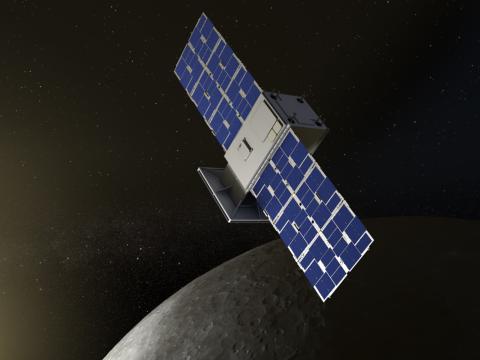
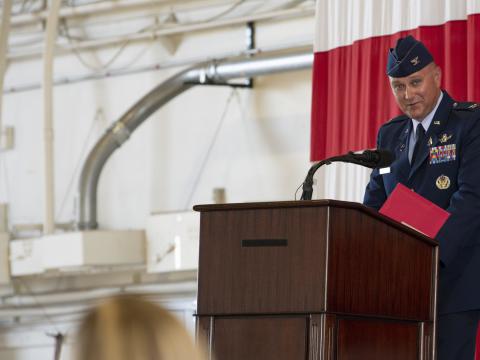

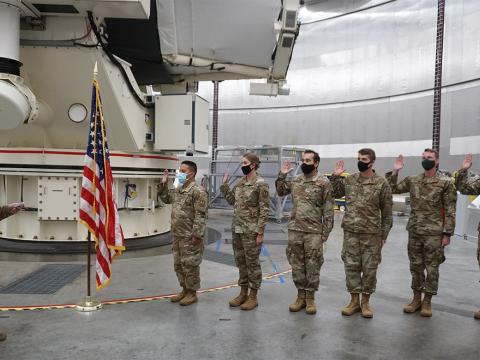
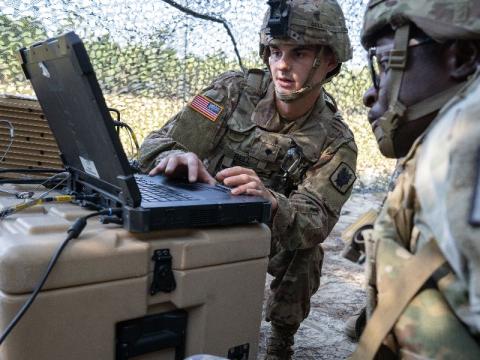
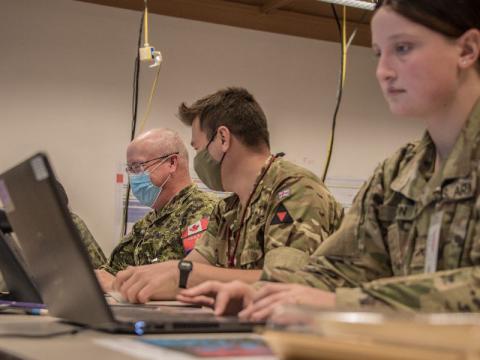
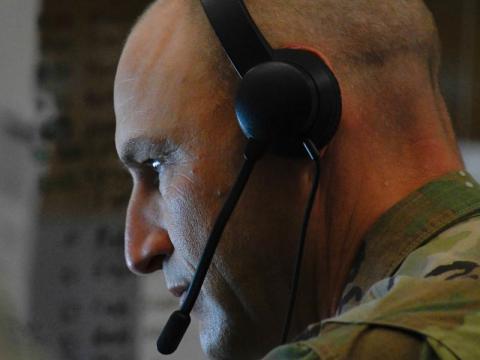
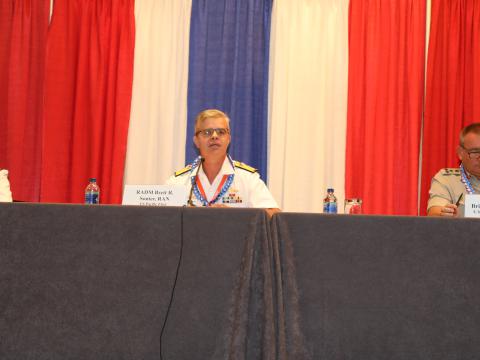

Comments